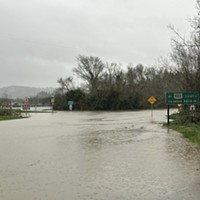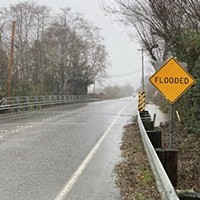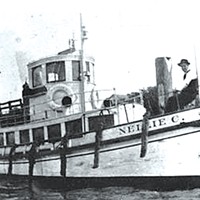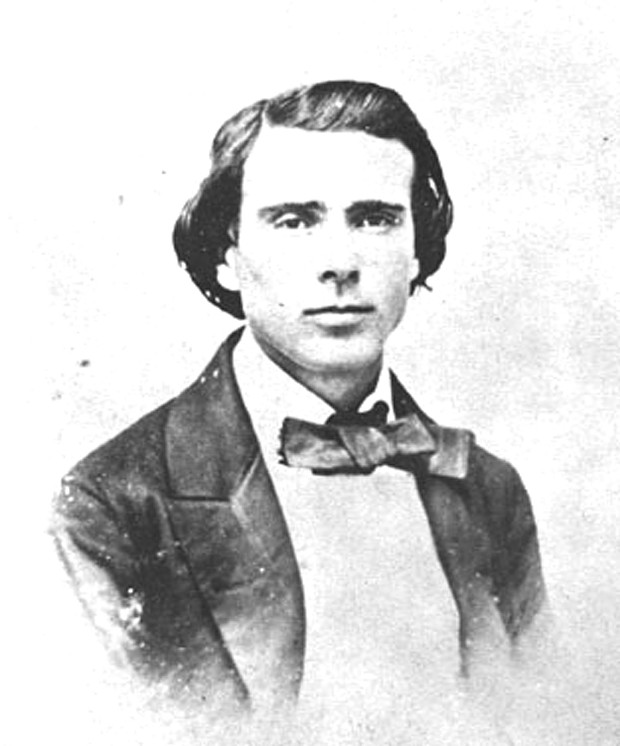[
{
"name": "Top Stories Video Pair",
"insertPoint": "7",
"component": "17087298",
"parentWrapperClass": "fdn-ads-inline-content-block",
"requiredCountToDisplay": "1"
}
]
"Here commenced an expedition, the marked and prominent features of which were constant and unmitigated toil, hardship, privation, and suffering."
From the journal of Lewis Keysor Wood, published in the Humboldt Times, April, 1856
Picking up where we left off last week ("Josiah Gregg: Prairie Years," April 21): After two decades of prairie living in the southwest, both in the U.S. and Mexico, Josiah Gregg was captivated by the lure of Californian gold. For a man who claimed his health improved markedly on the plains while breathing "the purity of the atmosphere of those elevated unembarrassed regions," it surely was a risky move to head into the wilds of Northern California. But Gregg's life had been full of risks thus far, so when he sailed from Mazatlán for San Francisco in the summer of 1849, I imagine he was looking forward to another great adventure.
Upon his arrival, he would have heard the latest "gold fever" news: Maj. Pierson Reading had found gold on a sandbar on the Trinity River, just six months after the original Sutter Mill strike hundreds of miles south. Soon Gregg, accompanied as always by his sextant, compass and botanical gear, was checking out placer mines on the Trinity. In late October of 1849, he was at Rich Bar mining camp, 3 miles north of Helena (just off present-day State Route 299), proposing an expedition to the coast. Local Native people had described a sheltered bay on the Pacific eight days walk west of the camp. The idea of finding an east-west route to service miners on the Trinity and perhaps laying claim to property on the coast must have looked appealing at first blush.
So it was that on Nov. 5, 1849, Gregg and seven others, with provisions for 10 days, headed westward into unknown territory. Two Native guides quit after an early snowfall covered any existing trails, so the ill-equipped party was forced to find its own route. They negotiated ridge after ridge of mountains after attempting, unsuccessfully, to follow the Trinity to the sea. Six harrowing weeks later, they reached the Pacific at the mouth of Little River. (Although historians know that L.K. Wood wasn't a 100 percent reliable source, his account of the expedition is the only one we have, as told several years later to the editor of the Humboldt Times.)
Heading south, the group borrowed Native canoes to cross a river. However, Gregg first wanted to establish the latitude of the river mouth, to the irritation of the other tired and hungry men. They crossed without him and when he finally caught up, Gregg "opened upon us a perfect battery of the most withering and violent abuse," according to Wood. The water body thus acquired its present settler name, Mad River.
Having "discovered" Wigi (the Wiyot name for Humboldt Bay), they were eager to return to "civilization" to report this potential shortcut to the Trinity mining camps, but dissension resulted in the group splitting. Four men, led by Wood, headed down the South Fork of the Eel, thence to the Sonoma Valley; the other four, under Gregg, originally stayed close to the coast but, finding this too difficult in winter, went east to emerge into the Sacramento Valley. Gregg, the "old gentleman" of the group (he was 43), didn't make it. Weak from starvation, he died hours after falling off his horse near Clear Lake, though accounts vary and he may have survived briefly in a Native village.
Within weeks of the return of the remaining expedition members, ships headed north out of San Francisco to the newly "found" bay. On April 9, 1850, the first of these, the Laura Virginia, entered it. Her captain Douglas Ottinger named the bay after Alexander von Humboldt, the Prussian naturalist-explorer who would, had he met him, have found much in common with Josiah Gregg.
Barry Evans (he/him, [email protected]), who drives to Helena along State Route 299 in about three hours, just can't imagine walking it. In winter. With no road or trail.
Editor's note: This story has been updated to show the Wiyot name for Humboldt Bay.Speaking of...
-

UPDATE: Local Emergency Declared Due to Storm Damage
Jan 15, 2024 -

Flood Advisories, Road Closures Hit as Rain Continues
Dec 30, 2022 -

M/V Madaket: 112 Years Young
May 12, 2022 - More »
Comments
Showing 1-1 of 1
more from the author
-
The Myth of the Lone Genius
- Jun 6, 2024
-
mRNA Vaccines vs. the Pandemic
- May 23, 2024
-
Doubting Shakespeare, Part 3: Whodunnit?
- May 9, 2024
- More »

































